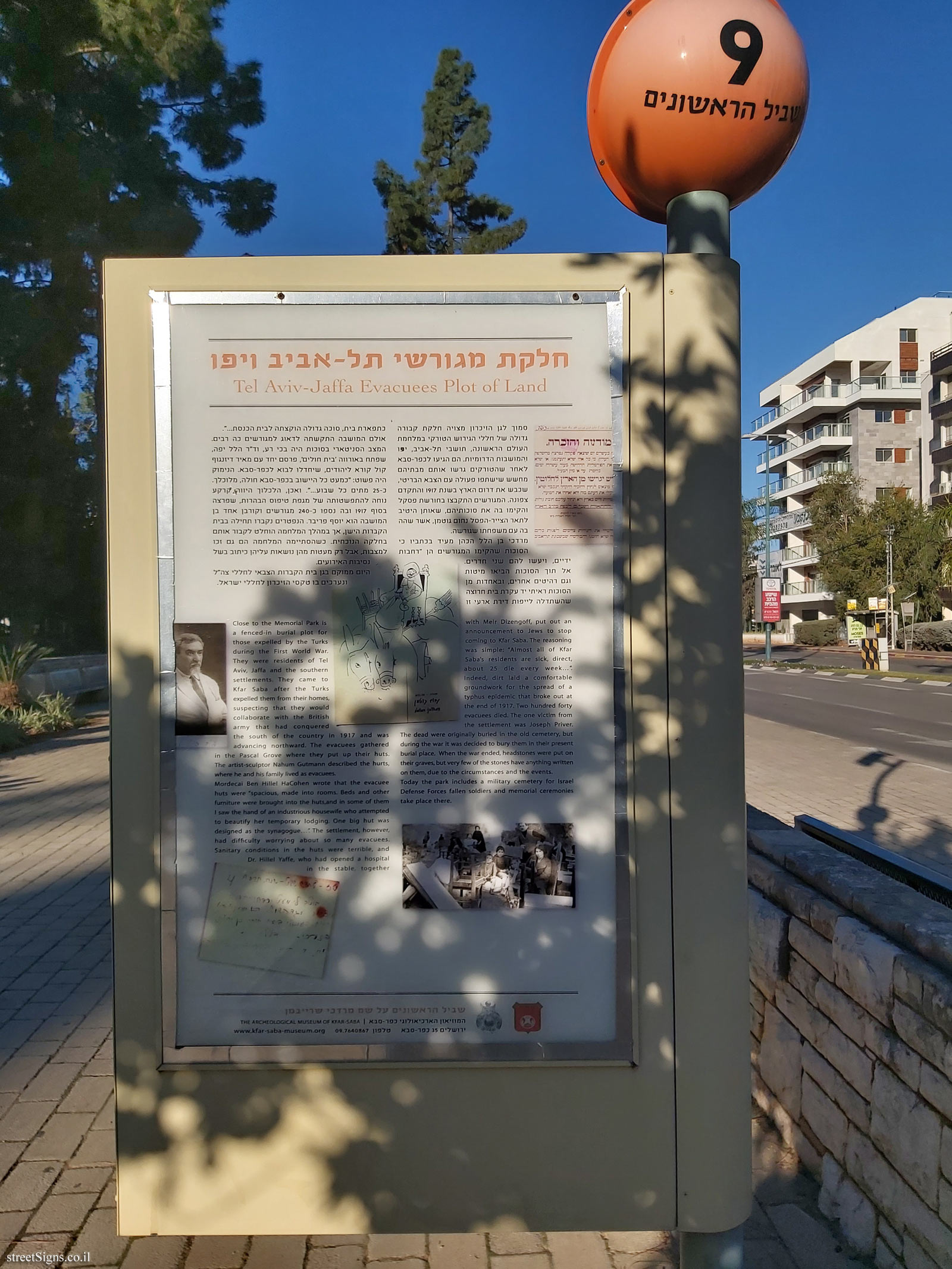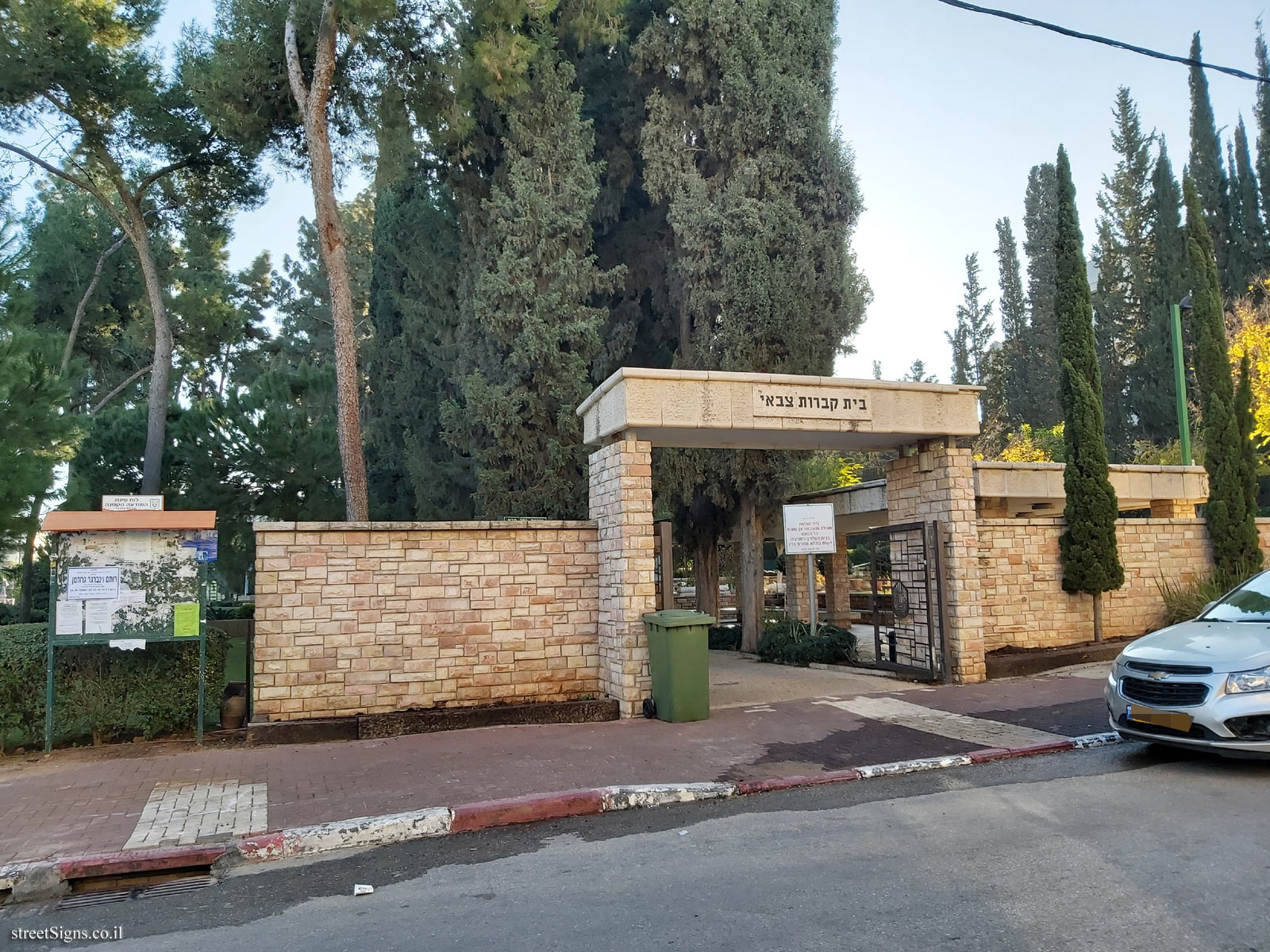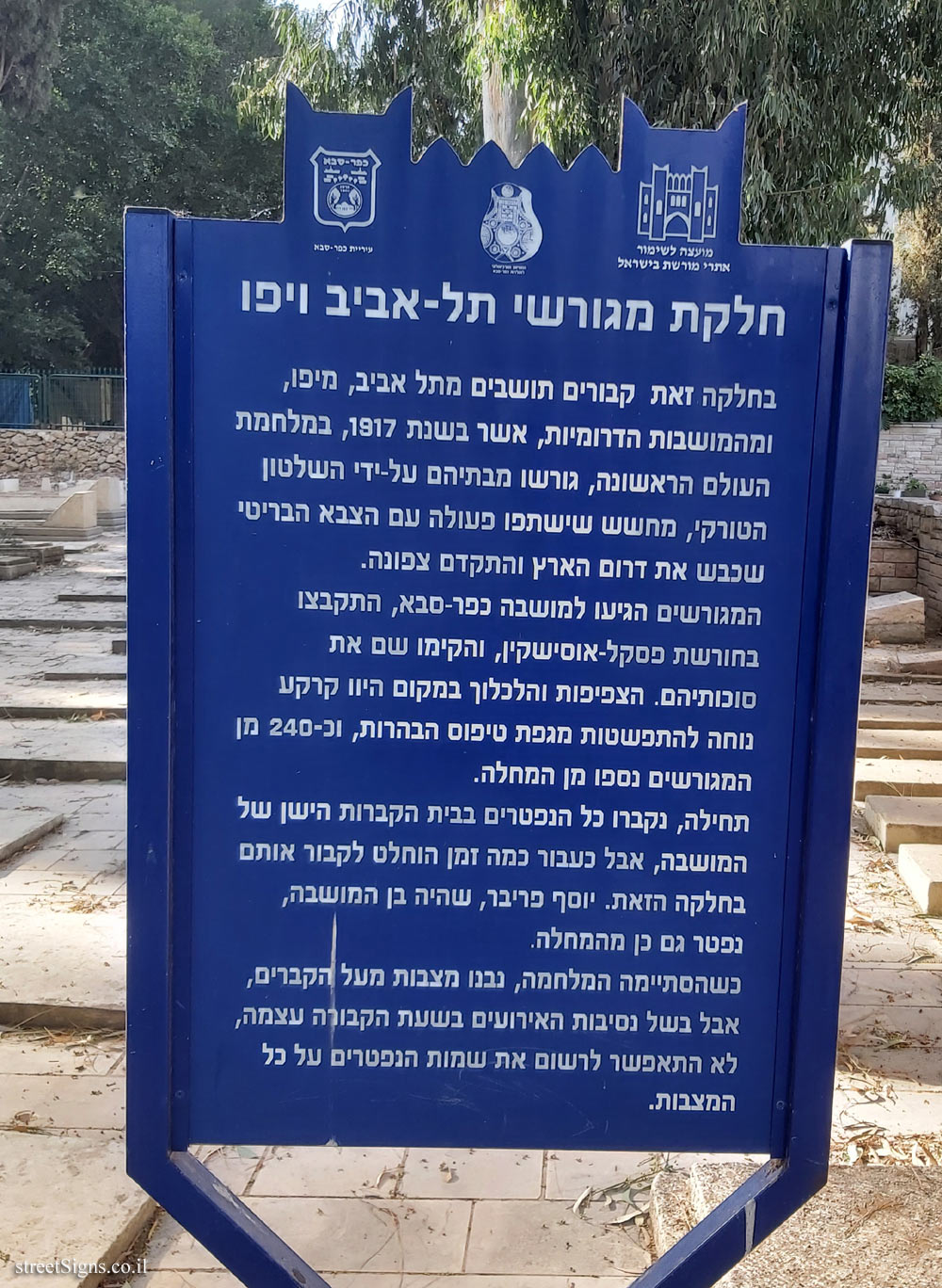On the sign:
[תמונה]
[מפת השביל]
[הצד השני של השלט]
חלקת מגורשי תל-אביב ויפו
Tel Aviv-Jaffa Evacuess Plot of Land
סמוך לגן הזיכרון מצויה חלקת קבורה גדולה של חללי הגירוש הטורקי במלחמת העולם הראשונה, תושבי תל-אביב, יפו והמושבות הדרומיות. הם הגיעו לכפר-סבא לאחר שהטורקים גרשו אותם מבתיהם מחשש שישתפו פעולה עם הצבא הבריטי, שכבש את דרום הארץ בשנת 1917 והתקדם צפונה, המגורשים התקבצו בחורשת פסקל והקימו בה את סוכותיהם, שאותן היטיב לתאר הצייר-הפסל נחום גוטמן, אשר שהה בה עם משפחתו שגורשה.
מרדכי בן הלל הכהן מעיד בכתביו כי הסוכות שהקימו המגורשים הן "רחבות ידיים, ויעשו להם שני חדרים. אל תוך הסוכות הביאו מיטות וגם רהיטים אחרים, ובאחדות מן הסוכות ראיתי יעד עקרת בית חרוצה שהשתדלה לייפות דירת ארעי זו כתפארת בית, סוכה גדולה הוקצתה לבית הכנסת...".
אולם המושבה התקשתה לדאוג למגורשים כה רבים. המצב הסניטארי בסוכות היה בכי רע, וד"ר הלל יפה, שפתח באורווה ’בית חולים’, פרסם יחד עם מאיר דיזנגוף קול קורא ליהודים, שיחדלו לבוא לכפר-סבא. הנימוק היה פשוט: "כמעט כל היישוב בכפר-סבא חולה, מלוכלך. כ-25 מתים כל שבוע...". ואכן, הלכלוך היווה קרקע נוחה להתשטותה של מגפת טיפוס הבהרות, שפרצה בסוף 1917 ובה נספו כ-240 מגורשים וקורבן אחד בן המושבה הוא יוסף פריבר. הנפטרים נקברו תחילה בבית הקברות הישן, אך במהלך המלחמה הוחלט לקבור אותם בחלקה הנוכחית. כשהסתיימה המלחמה הם גם זכו למצבות, אבל רק מעטות מהן נושאות עליהן כיתוב בשל נסיבות האירועים.
היום ממוקם בגן בית הקברות הצבאי לחללי צה"ל ונערכים בו טקסי הזיכרון לחללי ישראל.
Close to the Memorial Park is a fenced-in burial plot for those expeled by the Turks during the First World War. They were residents of Tel Aviv, Jaffa and the southern settlements. They came to Kfar Saba after the Turks expelled them from their homes, suspecting that they would collaborate with the British army that had conquered the south of the country in 1917 and was advancing northward. The evacuees gathered in the Pascal Grove where they put up their huts. The artist-sculptor Nahum Gutmann described the hurts, where he and his family lived as evacuees.
Mordecai Ben Hillel HaCohen wrote that the evacuee huts were "spacious, made into rooms. Beds and other furniture were brought into the huts,and in some of them I saw the hand of an industrious housewife who attempted to beautify her temporary lodging. One big hut was designed as the synagogue...". The settlement, however, had difficulty worrying about so many evacuees. Sanitary conditions in the huts were terrible, and Dr. Hillel Yaffe, who had opened a hospital in the stable, together with Meir Dizengoff, put out an announcement to Jews to stop coming to Kfar Saba. The reasoning was simple: "Almost all of Kfar Saba’s residents are sick, direct, about 25 die every week...". Indeed, dirt laid a comfortable groundwork for the spread of a typhus epidemic that broke out at the end of 1917. Two hundred forty evacuees died. The one victim from the settlement was Joseph Priver. The dead were originally buried in the old cemetery, but during the war it was decided to bury them in their present burial place. When the war ended, headstones were put on their graves, but very few of the stones have anything written on them, due to the circumstances and the events.
Today the park includes a military cemetery for Israel Defense Forces fallen soldiers and memorial ceremonies take place there.
סמל העיר כפר סבא
סמל מוזיאון כפר סבא
שביל הראשונים על שם מרדכי שרייבמן
המוזיאון הארכיאולוגי כפר-סבא
ירושלים 35 כפר-סבא
טלפון 09.7640867
THE ARCHAEOLOGICAL MUSEUM OF KFAR-SABA
www.kfar-saba-museum.org

 Click for a larger image
Click for a larger image  Click for a larger image
Click for a larger image  Click for sign's details
Click for sign's details  Click for sign's details
Click for sign's details